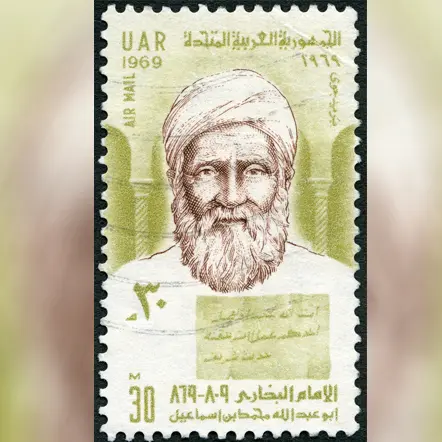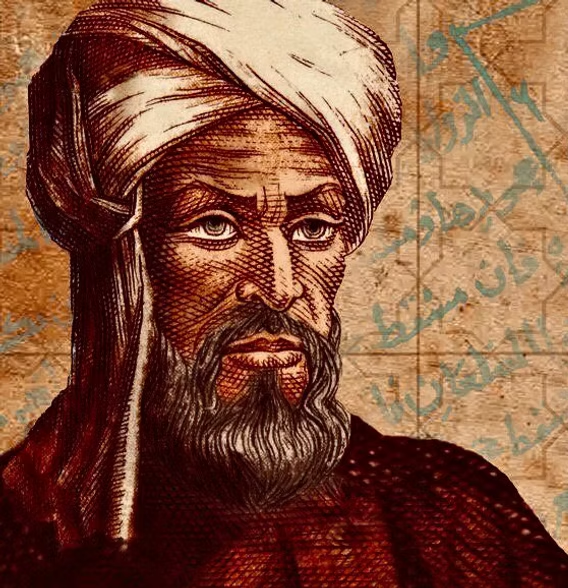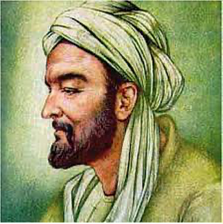Travel: TLV to Tashkent, Uzbekistan May/7-8/2025
- Lili Naveh
- May 7
- 11 min read
Updated: May 24

The one week guided tour to Uzbekistan, I joined, with my dear friend Edna, was due to depart only 3 days after the Yemenite Houthi movement fired another ballistic missile at Tel Aviv,
(4 May 2025) which this time hit the perimeter of the main terminal of Ben Gurion Airport .
It left a crater and damaged a road and a vehicle, putting an halt to all airport operations.
The Israeli defense system failed to shoot down the missile, despite several attempts to intercept it. That incident brought about cancellations of many foreign airline flights to Israel, and threw off many out going/ongoing flight schedules for the next few days.

The flight to Tashkent -Uzbekistan's capital and largest city- was originally due for 6:00pm on May 7th, however was moved up to 3:30pm, then delayed to 5:30pm, and once again to 7;40pm when it finally took off at 9:00 pm.
After passport control and retrieving luggage at Tashkent airport, the group was welcomed by the Tour's guides, and finally made it at 5:00 am the following morning, to the Tashkent's hotel,
The Uzbekistan guided trip (7th to the 14th) was offered by this Israeli tour operator.
Tiyul Shel Pam Ba-Haiim - "Trips of Once in a Life Time"
Owner - Noam Sella. 074 737 9239. lifetrip.noam@gmail.com
The tour was also advertised on Kishre Tarbut Tavel site,
The charming, knowledgeable and very capable Tour Guide (an Israeli currently residing in Sweden) who met the group in Tashkent was:
Anya Kozlova - Certified guide-interpreter
anyaguiding@gmail.com. +7 926 539-98871
Instagram: @anyaguiding
And the local reliable and humorous Uzbeck Guide and Tour company owner who coordinated and dealt with the logistics and contributed in English to the tour was:
Tolik Odilov - Chairman. Tolik_odilov@mail.ru. +998 33 599 99 55. +998 94 429 99 55
Travel Factory (Part of "Discovery Silk Road". +998999964438 info@discovery-uz.com
Noam Anya Tolik
Why Uzbekistan ?
Considered a pearl of Central Asia. Uzbekistan a recent past Soviet Republic entity,
is a landlocked country ,located at the heart of the region, It borders five surrounding landlocked countries: Kazakhstan to the north; Kyrgyzstan to the northeast; Tajikistan to the southeast; Afghanistan to the south, Turkmenistan to the south-west. throughout which, many centuries ago the Great Silk Road passed.

The Silk Road a network of Asian trade land routes, was active from the 2nd C BCE until the mid-15th C, Spanning over 6,400 km , It played a central role in facilitating economic, cultural, political, and religious interactions between the Eastern and Western worlds

like the sedentary cultural epicenter of Egyptian and Mesopotamian grand civilizations, facilitated by water of Rivers assuring permanent sustainability, so also Uzbekistan's, glorious historic past, has been anchored within the Oasis between its 2 rivers.
Most of the fertile space in the country is located between 2 important rivers


The Amudarya River historically known as the Oxus ,flows through the territory of Central Asia (Afghanistan, Tajikistan, Turkmenistan, Uzbekistan).
The length of the river is more than 1415 km, and the area of river basin is 309 thousand sq. km. The river is formed by the confluence of the Vakhsh and Panj rivers. It flows from north-westwards falling into the southern remnants of the Aral Sea. ,

The Syr Darya is the northern and eastern of the two main rivers in the endorheic basin of the Aral Sea, known historically as the Jaxartes. It originates in the Tian Shan Mountains in Kyrgyzstan and eastern Uzbekistan and flows for 2,256.25 km (west and north-west through Uzbekistan, Sughd province of Tajikistan, and southern Kazakhstan to the northern remnants of the Aral Sea.
The landscape of Uzbekistan, a term coined only 100 years ago was given by the Soviets (1920). Before the space was divided differently.
It is generally divided geographically into three types:
+the mountains and foothills of the east and south-east,
+ the deserts and semi-deserts the Kyzylkum (15th largest desert in the world. means Red Sand in Turkic languages) Ustyurt desert a flat hill clay plateau, and Aralkum formed on the former bottom of the Aral Sea. of the west,
+and the fertile flat-lands in the south-west and north-west. A hidden agricultural gem.
The most fertile part of Uzbekistan, the Fergana Valley is in the northeast
Kyzylkum Fertile Land Ustyurt
The territory of the country, of about 447,400 sq km, is a combination of colors, yellow and red sands of the deserts , green cultivated farm land, and white snow peaks of Chimgan ("Uzbek Switzerland" tourist skiing complex).
The distinctive feature of the extreme climate -30 to +60 over4 season promises high intensity of sunlight throughout the year. and drop of temperature in winter.
The week we spent in May was especially hot with temperatures at high 30th

Due to the specific harsh natural conditions, the inhabitants of the country are concentrated mainly in the very populated oases areas
Unlike most Oases I previously visited around the world, those of Uzbekistan are lacking in Palms or Citrus trees.
The trees encountered are mainly Oak, Sycamore, Maple, Birch, Mulberry and willows.
Thus also our trip followed the main
habitable cities along the Silk Road
Tashkent> Khiva> Bukhara >Samarkand
Uzbekistan National Flag

The national flag of Uzbekistan, officially the State Flag of the Republic of Uzbekistan, consists of a horizontal triband of:
+ azure color - a symbol of the sky and of clear water. and also of the color identified of the Turkic peoples.
+White color- traditional Uzbek symbol of peace and good luck.
+Green, symbol of nature, new life, and good harvest
The colors are separated by 2 thin red fimbriations, represent the power of life with a white crescent moon which is connected with Uzbek historical imagery and birth of a nation, and 12 white stars - which represent spirituality and divinity, as well as an allusion to Uzbek historical tradition and calendar. and also a symbol of the pursuit of perfection and happiness of Uzbek people in their homeland.
It was adopted upon independence in 1991 to replace the flag of the Uzbek Soviet Socialist Republic,

These lofty symbolism embedded in the Flag's colors and images, definitely reflects the directive mindset engineered and prescribed for the citizens of this new nation
More than 33 million people live in Uzbekistan which is part of the Turkic languages world, as well as a member of the Organization of Turkic States.
While the Uzbek language is the majority spoken language in Uzbekistan, Russian is widely used as an inter-ethnic tongue and in government.

Islam is the majority religion however, most Uzbeks are non-denominational Muslims.
Christianity accounted for about 2.3% of the population or 630,000 (2010)
There were 94,900 Jews in Uzbekistan in 1989, but fewer than 10,000 remained in 2021 (around 38% of lived in Tashkent). . Some groups remain in Samarkand, Bukhara, Fergana and Andijan. Most of the remaining Jews are Ashkenazi.
(more will be mentioned later)
Now a days, in contrast to the turbulent bloody past, peace and harmony ideals engraved into the Uzbekistan's flag, are also according to Tolik the Guide, are the main characteristics of the multinational population which is comprised of more than
130 different nationalities/ethnic groups.
Also Israel and Uzbekistan maintain relatively strong diplomatic and cooperative relations,. The 2 countries one Muslim and the other Jewish established relations in 1992.
when Israel opened its embassy in Tashkent and in 1997, Uzbekistan opened its embassy in Israel. The focus of their cooperative relationship is on areas like: energy, water, agriculture, technology and tourism.

In 2022, the Israeli embassy in Uzbekistan unveiled a monument to honor the Uzbeks who assisted Jewish refugees during WWII, in the Victory Park of Tashkent
Yet, apparently the 3 men who were accused of killing Chabad Rabbi Zvi Kogan in the UAE in 2024 and have been sentenced to death, were Uzbeks
In 2025, Uzbekistan was publicly identified for the first time as a user of Pegasus spyware, a surveillance tool developed by the Israeli company NSO Group
Uzbekistan Airways has flown between Tel- Aviv and Tashkent since 1992. In 2018, about 10,000 Israelis visited Uzbekistan and since then the numbers have been increasing with our group's visit also adding to the growth. in statistics
The first people recorded in Central Asia were Scythians who came from the northern grasslands of what is now Uzbekistan,
Sometime when these Iranian nomads settled in the region they built an extensive irrigation system, along the rivers of Central Asia and built towns at Bukhara and Samarqand.
5th BC as China began to develop its silk trade with the West, Persian cities took advantage of this commerce by becoming centers of trade. Using an extensive network of cities and rural settlements the Sogdian intermediaries became the wealthiest of these Iranian merchants, As a result of this trade cities such as Bukhoro (Bukhara) Samarqand (Samarkand) and Khiva emerged as centers of government and high culture in Central Asia, forming an important part of the overland trade routes linking China with the Middle East and imperial Rome.
3rd BC -n A remote part of the Persian Empire, the area was briefly conquered in 328 BC, by Alexander the Great, and was known as Sogdia at this time. It, or parts of it, then passed through the Seleucid Empire, Greco-Bactrian Kingdom, Kushan Empire, Hephthalite Empire, and Sasanian Empire
1 AD Long before Islamic invasion, the region was ruled by Hindu kings for several centuries. Among all the dynasties, Kushan dynasty was the most remarkable and influential one. This period is well known for expansion of science, art and culture from both Hinduism and Buddhism while both religions flourished in harmony. The region was at its peak glory during the period
7th-8th C - Arabs conquer the area. The Early Muslim conquests and the subsequent Samanid Empire converted most of the people, including the local ruling classes, into adherents of Islam
9th-10th C - Islamic "Golden Ages" period
Persian Samanid dynasty becomes dominant and develops Bukhara as important center of Islamic culture.
Those mentioned below were prominent leading figures of the Islamic Golden Age
Muhammad al-Bukhari, -9th-c Persian Muslim muhaddith, most important hadith scholar in the history of Sunni Islam.
Al-Tirmidhi, - Imām at-Termezī/Tirmidhī, was an Islamic scholar/writer
al Khwarizmi,-also named Al-Jabr in Arabic it translates to "completion" or "restoration," and is the origin of the word "algebra."associated with this mathematician who is often considered the father of algebra. He was vastly influential mathematician who produced Arabic-language works in mathematics, astronomy, and geography.
The zero which was made its way from India to China and back to the Middle East, was taken up by the mathematician al-Khowarizmi around 773. He studied and synthesized Indian arithmetic and showed how zero functioned in the system of formulas.
al-Biruni, -Khwarazmian Iranian scholar and polymath who has been called variously "Father of Comparative Religion", "Father of modern geodesy", Founder of Indology and the first anthropologist.
al -Bukhari. al -Khaweizmi - Al-Jabr al -Biruni
Omar Khayyam.- -a Persian poet and polymath, known for his contributions to mathematics, astronomy, philosophy, and Persian literature.
Innovations in science, such as the development of chemical processes are noted by
Jabir ibn Hayyan purported author of a large number of works in Arabic,alchemy and chemistry, magic, and Shi'ite religious philosophy. And
Ibn Al-Haytham, medieval mathematician, astronomer, and physicist referred to as
"the father of modern optics", he made significant contributions to the principles of optics and visual perception in particular.
Omar Khayyam. Ibn Al-Haytham Ibn Al- Haytham

Avicenna -Ibn Sina, preeminent philosopher and physician of the Muslim world, serving in the courts of various Iranian rulers. and often described as the father of early modern medicine.
There are streets in his name in Israe.l
Maimonides (RAMBAM 1138–1204) was was aware influenced by Ibn Sina's work and incorporated some of his ideas but not through direct mentorship..
Born in 980 in the village of Afshana in Transoxiana to a Persian family[ near the Samanid capital of Bukhara, Ibn Sina's ancient monotheistic Zoroism belief allowed him to dissect corpses, for medical research purposes, a practice which, at the time was forbidden in monotheistic religions . That practice allowed him to retrieve the medical knowledge on human internal systems/functions, lost in the burning of Alexanderia's library. and the previous Greek/Roman medical knowledge accrued
Ibn Sina most famous works are The Book of Healing, a philosophical and scientific encyclopedia, and The Canon of Medicine, a medical encyclopedia which became a standard medical text at many medieval European universities and remained in use as late as 1650.

Besides philosophy and medicine, Avicenna's corpus includes writings on astronomy, alchemy, geography and geology, psychology, Islamic theology, logic, mathematics, physics, and works of poetry.
The Physician is a recommended film about Ibn Sina, acted by Ben Kingsley
in a 2013 German historical drama based on the novel of the same name by Noah Gordon telling a story of 11th-C Persia, a surgeon's apprentice disguises himself as a Jew to study at a school that does not admit Christianity.
13th-14th -with the decline of the local Khwarazmian dynasty and Central Asia as a whole, conquered by Genghis Khan, and decimated by the Mongol invasion .the region become part of Mongol empire .after which the region became dominated by Turkic hordes competing to fill the vacuum.
14th C - Mongol-Turkic ruler Tamerlane

Amir Temur the conqueror, .born in the city of Shahrisabz established the Timurid Empire spanning roughly over 137 years.with Samarkand, as its capital.
The empire flourished the late medieval period, (1370–1507) primarily in Greater Iran including in vast territories spanning Central Asia, Iraq, and parts of modern-day Afghanistan, Pakistan, India, and Turkey.
Temur was proclaimed the Supreme Emir of Turan of an empire which experienced a cultural revival, particularly in architecture, and became a center of science under the rule of his grandson Ulugh Beg, Timurid sultan, as well as an astronomer and mathematician,. giving birth to the Timurid Renaissance.

Timurid rulers were sympathetic to Persian culture and lured artists, architects, and men of letters who would contribute to their high court culture.
The Timurids were the final great dynasty to emerge from the Central Asian steppe
The empire eventually declined and fragmented, leading to its collapse by 1507
16th C - The territories of the Timurid dynasty were conquered by Uzbek Shaybanids who moved the center of power to Bukhara.. One of the tribes heads combined 92 tribes.
18th-19th c - Rise of independent Uzbek states of Bukhara a and Smarkad
Russian/Soviet Rule
19th C . All of Central Asia was gradually incorporated into the Russian Empire , with Tashkent becoming 1865-76 the political center of Russian Turkestan.
They also make Bukhara and Khiva protectorates and annex Kokand.
1917-1920 - Soviet rule was established by Russian colonists in November 1917 after an armed uprising. Bolsheviks gradually conquer Turkestan, and lasted until 1990.
1918-22 - New Communist rulers outlawed religion, close down mosques, Madrasa left deserted or recycled to museums and markets., and Muslim clergy was persecute as part of secularisation campaign.

1921-24 - Reorganization of Soviet member-states results in the creation of Uzbekistan and its neighbors. In 1924, national delimitation created the Uzbek Soviet Socialist Republic as an independent republic within the Soviet Union.
USSR established in 1922 15 Republics combined.
1930s - Soviet leader Stalin purges independent-minded Uzbek leaders, replacing them with Moscow loyalists. In WW II Uzbekistan absorbed over 2 m refugees
1950s-80s - Cotton production boosted by major irrigation projects which,however, contribute to the drying up of the Aral Sea.
1966 - Devastating earthquake destroys much of capital Tashkent.
1970s-1980s - Uzbek Communist chief Sharaf Rashidov the First Secretary of the Central Committee of the Communist Party of Uzbekistan (1959 until his death in 1983) ensures the promotion of ethnic Uzbek over Russian officials. He falsifies cotton harvest figures in scandal exposed under Soviet leader Mikhail Gorbachev's policy of glasnost
1989 - Islam Karimov becomes leader of Uzbek Communist Party.
1990 - Uzbekistan's Independence
1990 -Following the dissolution of the Soviet Union, it declared independence as the Republic of Uzbekistan.
Uzbekistan's Communist Party declares independence and economic and political sovereignty..After the USSR fall, back to religion though separation between religion and politics.
Islam Karimov becomes the President. (1991 until his death in 2016.)
Following the collapse of the USSR, Uzbekistan joins the Commonwealth of Independent States.
1991 to Present - the declaration of state independence on by I.A. Karimov, was an important milestone in the modern history of the country.
Today, the Republic of Uzbekistan consists of 12 provinces and the Republic of Karakalpakstan. It has again become a key segment of a renewed highway joining countries of east, west, north and south Eurasia.
+++++++++++++++++++++
TO BE CONTINUED......



































Comments